
Taunt's image is viewed from the priory ruins, looking north. Two large Cedars flank the entrance to the pleasure ground, and ornamental pillars with decorative urns are strategically placed around the gardens. The Ankerwycke Yew is located right of centre, but concealled behind shrubs.
Extracts from Various Sales particulars
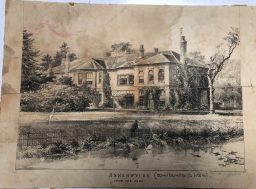
This sketch of the west face of the mansion was taken from a 1868 Sales Particular. The contents of the library and as well as furniture was all included in the sale.
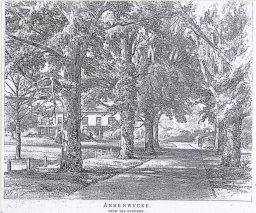
This other sketch, from an 1862 sales particular shows the avenue of elm that lead from Staines Road to Ankerwycke.
The sweeping drive survives, but the elms were felled in the 1970s
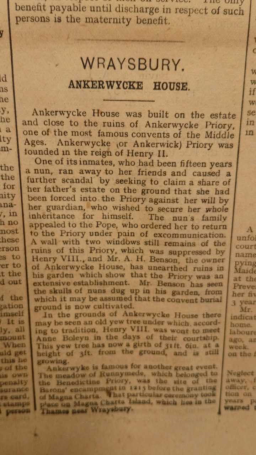
When occupied by Benson, it is recorded he discovered human remains in the garden of his house. As the property was not near the monastic graveyard, is this evidence for a Chapel at the Gatehouse, used to bury poor people?
The 19th Century
When Ankerwycke House was purchased by George Simon Harcourt in 1829, and was intermittently leased out. The estate was well kept, as this early image from Henry Taunt shows. However difficulties in retaining tenants became more and more common. Several times the mansion was unoccupied, and with the demands from an expanding population, Simon's son, George Harcourt looked at selling off parcels of land. Thus in June 1913, 31 plots on the Ankerwycke Estate were offered for sale, including 9 along the River Thames
.

Published in local newspapers at the time, the sale of land no doubt attracted much attention.
Benson's Ankerwycke
In 1901 Watchmaker Arthur Benson is recorded to be occupying Ankerwycke House. He had inherited the business, with his brother Alfred in 1878 upon the death of thier father.
The firm was originally established by brother James William Benson and Samuel Suckley Benson as watchmakers, goldsmiths and silversmiths based at Cornhill in the City of London.

Whilst best known for their timepieces, the firm also sold jewellery and by the 1880s were incorporating platinum into their gold and diamond set jewels.
It appears Arthur rented Ankerwycke initially, but in 1924 he purchases the Estate from Guy Harcourt. Arthur died aged 77 in 1934, but the business continued, despite their factory being bombed during WW2.
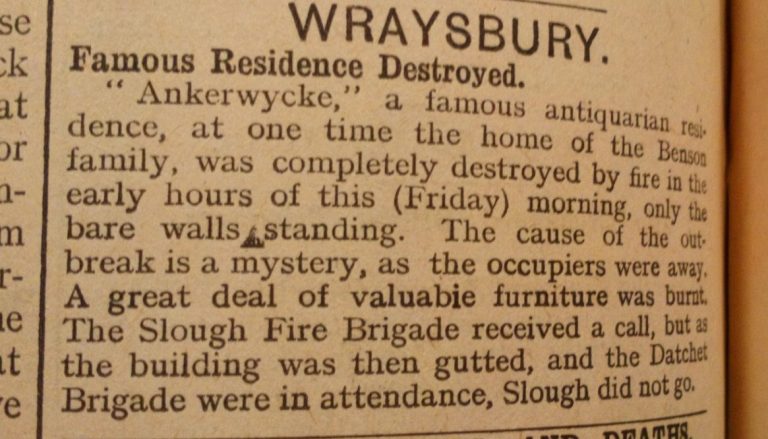
On Saturday 18th September 1915 a terrible fire broke out at Ankerwycke Priory. In the Gazette the following Friday (24th) it was reported that the cause of the fire was a mystery.
Amazingly the building was restored, but much of the valuable furniture, as well as books and paintings lost.
1901 Census for Wraysbury
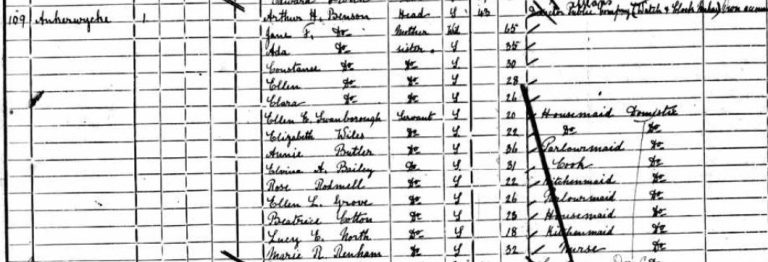
The 1901 census records a large househol, made up of Arthur Benson, his mother Jane, as well as four other females. The servants out numbered the occupants, with several parlour and kitchen maids, cook and nurse living in the house. Adjacent, the lodge, cottages and stables all accommodated staff including the coachman, gardeners and farm labourers.
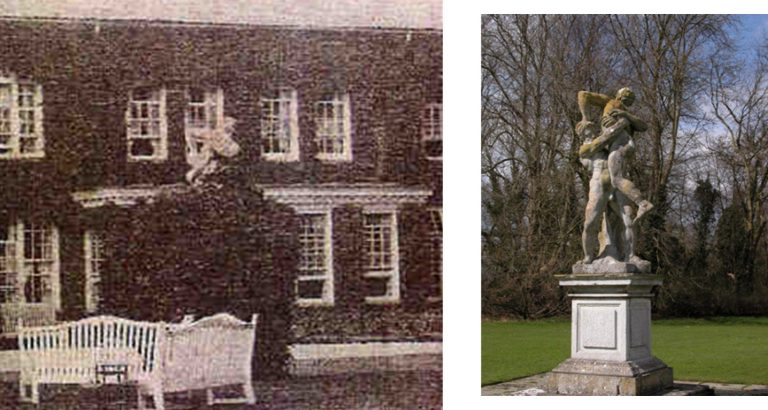
In one of the few images of the mansion, a statue is evident located on the east lawn. Research has shown that this is of Hercules wrestling with Antaeus. Made from Portland stone, the statue is considered, British (English) School, copied from a model made by Giambologna. Hercules, his back arched, has lifted Antaeus off the ground and is crushing the breath – and life – out of his chest. Antaeus, his head raised heavenwards, attempts to release himself from this grip by pushing the top of Hercules’s head with his left hand, with all his might.
The statue was later acquired by Lord Fairhaven (evidently from Bell Weir House) and re-erected at his home at Anglesey Abbey, Cambridge. Both his house and the contents were later bequeathed to the National Trust. The provenance of the statue dates it to between 1675 and 1725, but it is unclear whether this was purchased for Ankerwycke in 17th century, or moved here later by Blagrove or Harcourt.
Purchase by Buckinghamshire County Council
In the years leading up to World War Two, there was great demand on land for housing. Local Authorities were keen to create a 'Green Girdle' around cities and towns to prevent over development. At the time there were no statutory means of preserving land from development, and thus the only way to secure it was by purchase. Legislation was eventually developed to safeguard Green Belt, which was formerly designated as part of the 1949 Town and Country Planning Act.
Ankerwycke at this time was owned by FEG Stamford (c1935). Keen to sell for riverside development, Buckinghamshire County Council stepped in to acquire the land. On 22nd July 1937 the County Council sanctioned the acquisition of 110.21 acres at the purchase price of £12,000.
The estate was leased mostly as a farm, with some areas retained as paddocks for grazing. Public access was not permitted, which helped keep the Ankerwycke Yew out of the public eye.
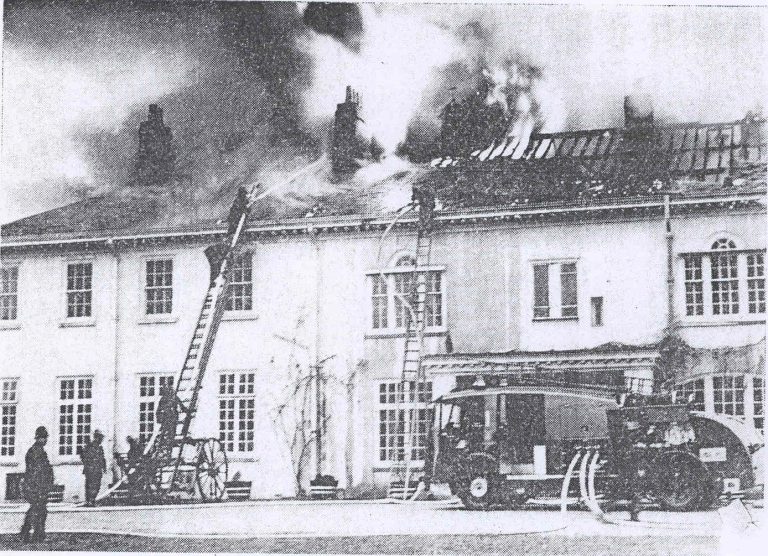
On Wednesday 21st March 1962 another fire besieged Ankerwycke.
Destroying all but half of the ground floor, as a stiff breeze swept the flames from one end of the building to the other. Ornamental stone pavements were broken up to enable the upper windows to be broken, to enable the firemen’s hoses to dowse the flames.
The property was divided into tenements, including Mr Carol and Mrs Shelia Summerville (? The artist?). She was in the house with her 9 year old son when the fire started. It transpires that the young boy had tripped over the flex cable of the electric fire in his room. Shelia said “I grabbed Jamie and managed to get him outside, and then turned back for the cat and budgerigar but by that time the smoke was too thick.
The mansion was too badly destroyed, and Buckinghamshire County Council had the roof but it was left to decay.

The image above was published in 1937, and shows the 'Sold' sign over the original placard at Ankerwycke. 140 acres of land both at Ankerwycke and in the parish of Wraysbury were acquired.
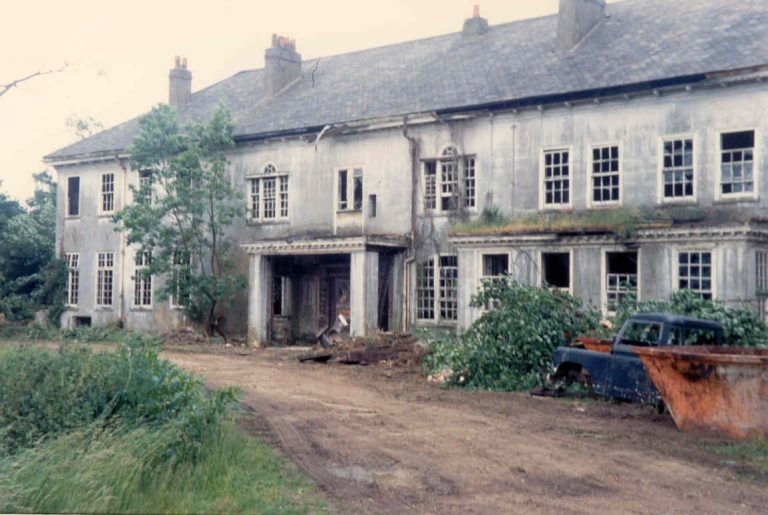
The mansion remained empty from this time, and gradually over time the fabric of the building was removed, many no doubt ending up in antique shops or local sales.
The front door I believe is still local - fitted to a property in the village.
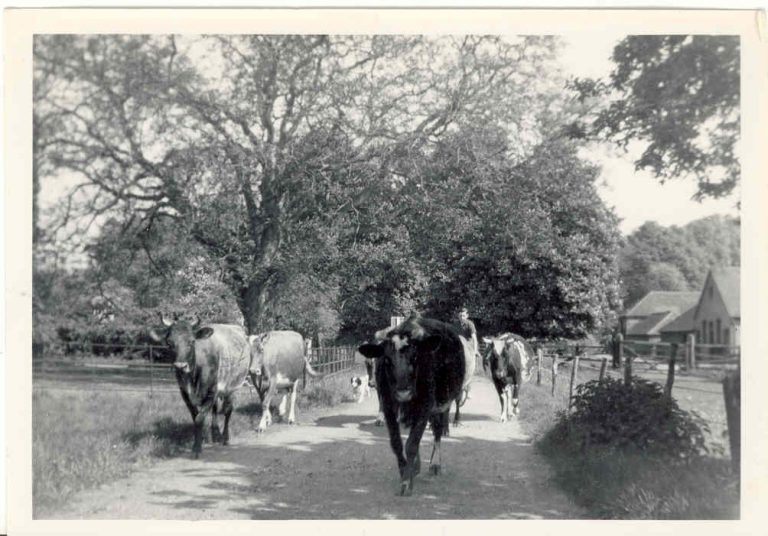
One of the tenants was Jim Flemming, who ran a milking herd. Here the cows are pictured returning to pasture from the milking parlour. This scene is from the 1960s, but is very hard to image such a tranquil scene, especially so close to London.
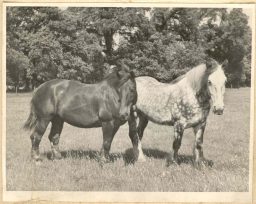

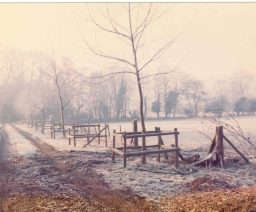
Ankerwycke under threat
In the last decades of the 20th century, the Ankerwycke Estate became under threat from development. There were numerous plans drafted including the notion to turn the mansion into luxury flats, and the parklands into an 18 hole golf course. A Club house and development proposed where the Farm buildings are. Fortunately a local group, called The Friends of Ankerwycke YEW (FAY) applied pressure to the local authority (then Berkshire County Council) not to allow development. Their determination and resilience paid off as in 1998 the Estate was acquired by The National Trust.
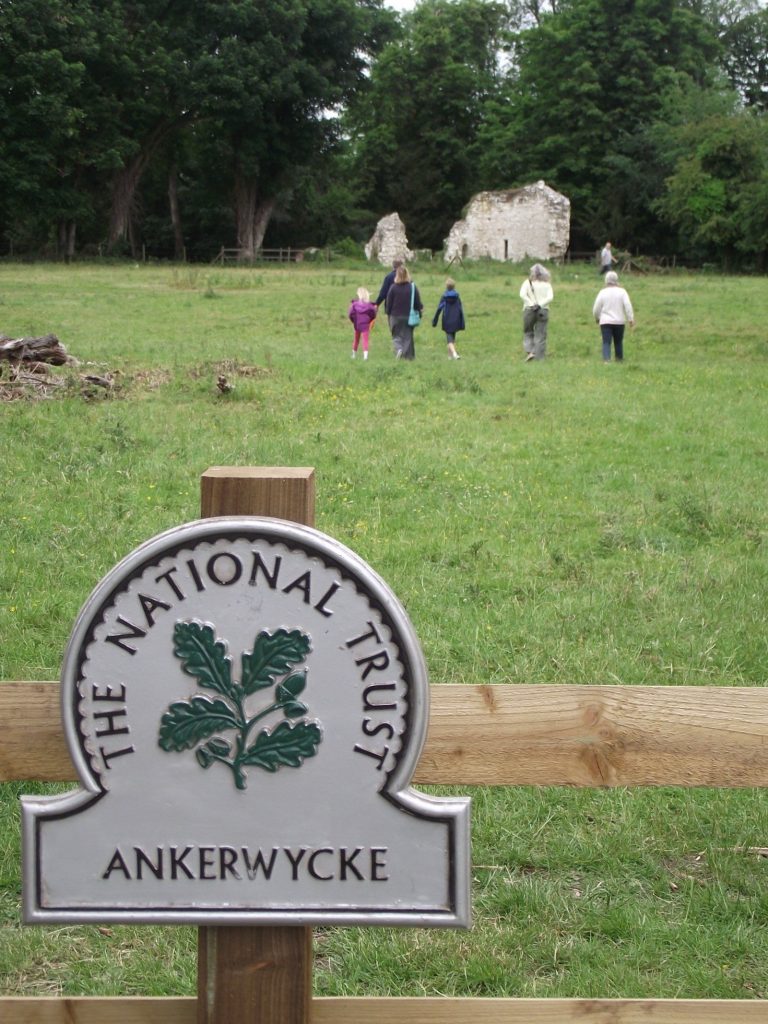
Acquistion by The National Trust
Today the National Trust manage Ankerwycke with a tenant farmer, who grazes cattle at low densities. This creates a less intensive grazing regime which is of great benefit to plants and wildlife.
The National Trust work hard to improve the habitats, woodland and wetlands on the estate, and have recently installed a series of new interpretation boards and board walk, as part of the Heritage Lottery funded project - Runnymede Explored.
© Copyright. All rights reserved.
We need your consent to load the translations
We use a third-party service to translate the website content that may collect data about your activity. Please review the details in the privacy policy and accept the service to view the translations.
